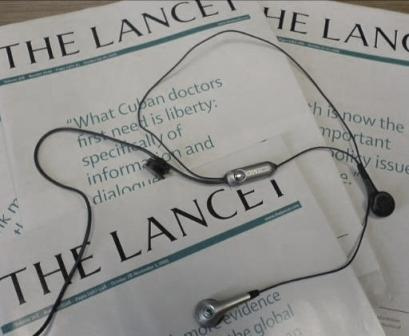Aid Watch Rerun: Nobody wants your old shoes: How not to help in Haiti
NOTE FROM THE EDITORS: Over the holidays, we'll be publishing reruns of some of our posts from the first 2 years of Aid Watch. This post originally ran a week after the Haiti earthquake, on January 16, 2010. The following post is by Alanna Shaikh. Alanna is a global health professional who blogs at UN Dispatch and Blood and Milk.
Don’t donate goods. Donating stuff instead of money is a serious problem in emergency relief. Only the people on the ground know what’s actually necessary; those of us in the rest of the world can only guess. Some things, like summer clothes and expired medicines are going to be worthless in Haiti. Other stuff, like warm clothes and bottled water may be helpful to some people in some specific ways. Separating the useful from the useless takes manpower that can be doing more important work. It’s far better to give money so that organizations can buy the things they know they need.
Some people like to donate goods instead of cash because they worry that cash won’t be used in a way that helps the needy. If that’s you, I have two points. 1) Why are you donating to an organization you don’t trust? 2) What’s to stop them from selling your donated item and using the money for whatever they want?
After Hurricane Mitch in 1998, Honduras was flooded with shipments of donated goods. They clogged ports, overwhelmed military transport, and made it nearly impossible for relief agencies to ship in the things they really needed. Those donations did harm, not good. Expired drugs had to be carefully disposed of. Inappropriate donations had to be transported away and discarded. All of this wasted time and money.
Don't go to Haiti. It’s close to the US, it’s a disaster area, and we all want to help. However, it’s dangerous right now and they don’t need “extra hands”. The people who are currently useful are people with training in medicine and emergency response. If all you can contribute is unskilled labor, stay home. There is no shortage of unskilled labor in Haiti, and Haitians will be a lot more committed than you are to the rebuilding process.
If you are a nurse or physician, especially with experience in trauma, and you want to volunteer, email Partners in Health – volunteer@pih.org – and offer your services. Or submit your details to International Medical Corps. They’ll take you if they can use you. Do not go to Haiti on your own, even if you are doctor. You’ll just add to the confusion, and you’ll be a burden to whoever ends up taking responsibility for your safety.
Don’t ignore rebuilding. The physical damage done to Port au Prince is going to take a long, long time to repair. The human consequences will have a similar slow recovery. Haiti will still need our help next year, and the years after that. It is going to take more than just a short-term infusion of relief money. Give your money to organizations that will be in Haiti for the long haul, and don't forget about Haiti once the media attention moves on.
 From Aid to Equality
From Aid to Equality

